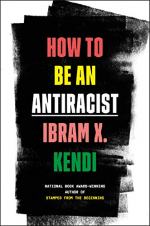|
This section contains 1,551 words (approx. 4 pages at 400 words per page) |

|
Summary
In Chapter 12, “Class” (151), Kendi recalls moving to Philadelphia to attend graduate school at Temple University. He moved into the Hunting Park neighborhood, a poor region of the city with a high crime rate. He admits he felt living in the “ghetto” (151) would be an authenticating experience. He goes on to explain that race and class are distinct but connected concepts, and that poor Black people are more likely to be viewed as a monolithic group and viewed as lazy or unambitious. Historically, he explains, capitalism and racism are “conjoined twins” (156), intertwined through slavery. Capitalism began with the transatlantic slave trade and continues to operate as a system defined by racial inequities and heavily exploitative. In pursuing authenticity by living in Hunting Park, Kendi was validating the class racist idea that poor Black people are inherently more Black than their middle or upper class...
(read more from the Chapters 12 - 15 Summary)
|
This section contains 1,551 words (approx. 4 pages at 400 words per page) |

|




